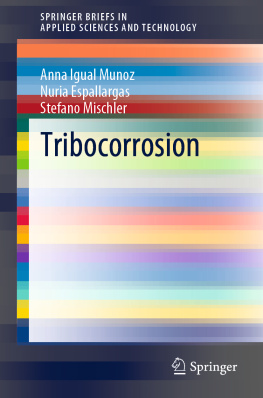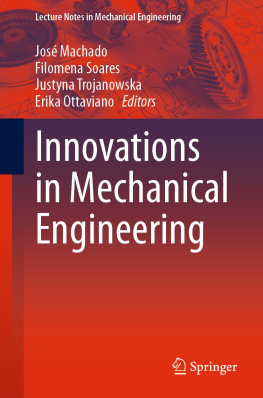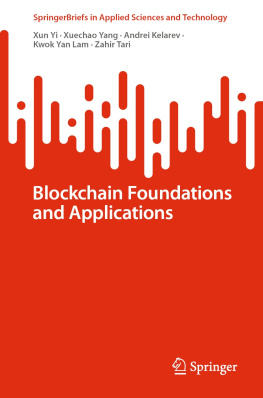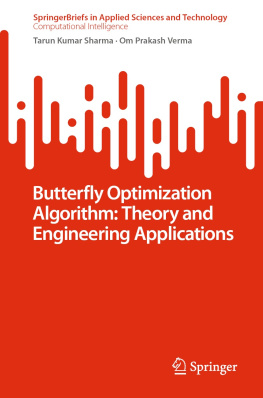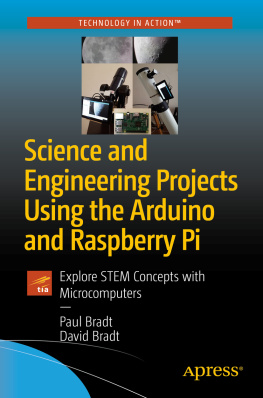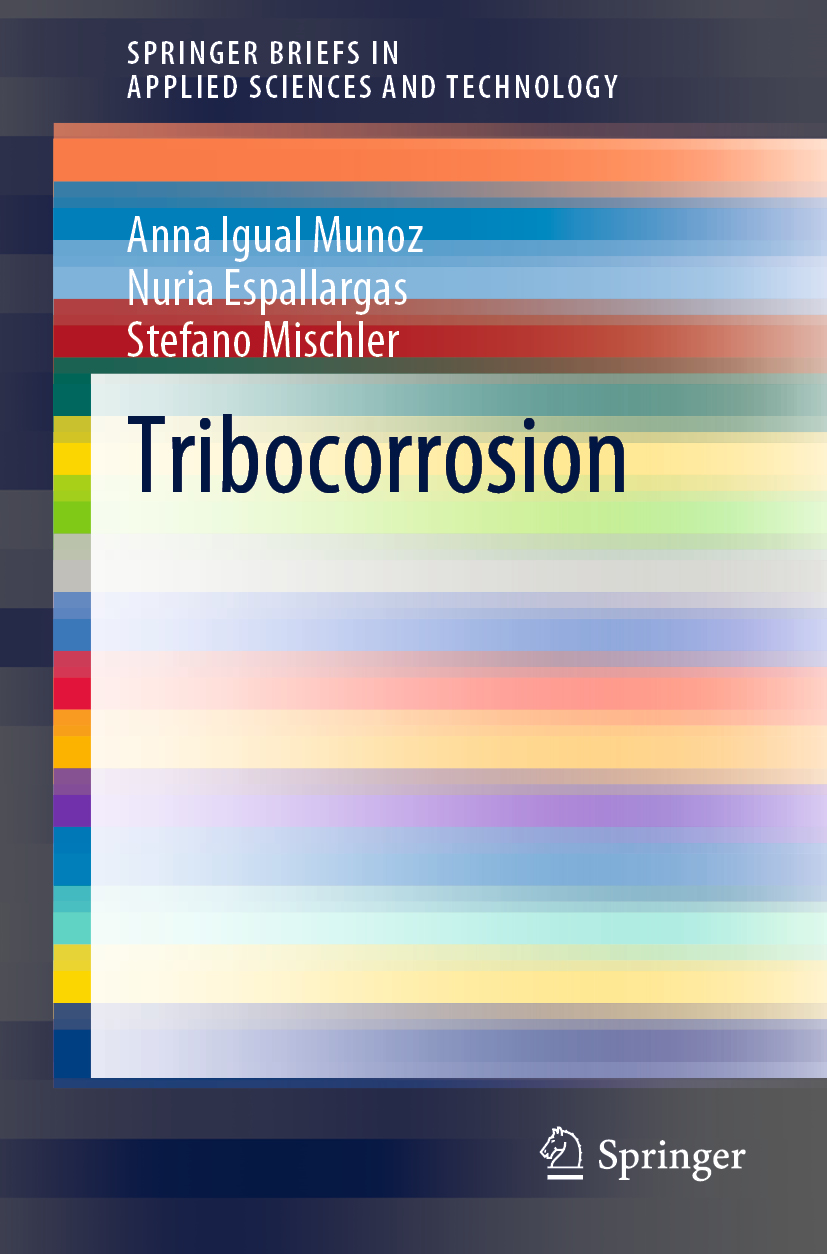SpringerBriefs in Applied Sciences and Technology
SpringerBriefs present concise summaries of cutting-edge research and practical applications across a wide spectrum of fields. Featuring compact volumes of 50 to 125 pages, the series covers a range of content from professional to academic.
Typical publications can be:
A timely report of state-of-the art methods
An introduction to or a manual for the application of mathematical or computer techniques
A bridge between new research results, as published in journal articles
A snapshot of a hot or emerging topic
An in-depth case study
A presentation of core concepts that students must understand in order to make independent contributions
Typical publications can be:
A timely report of state-of-the art methods
An introduction to or a manual for the application of mathematical or computer techniques
A bridge between new research results, as published in journal articles
A snapshot of a hot or emerging topic
An in-depth case study
A presentation of core concepts that students must understand in order to make independent contributions
On the one hand, SpringerBriefs in Applied Sciences and Technology are devoted to the publication of fundamentals and applications within the different classical engineering disciplines as well as in interdisciplinary fields that recently emerged between these areas. On the other hand, as the boundary separating fundamental research and applied technology is more and more dissolving, this series is particularly open to trans-disciplinary topics between fundamental science and engineering.SpringerBriefs are characterized by fast, global electronic dissemination, standard publishing contracts, standardized manuscript preparation and formatting guidelines, and expedited production schedules.
On the one hand,SpringerBriefs in Applied Sciences and Technology are devoted to the publication of fundamentals and applications within the different classical engineering disciplines as well as in interdisciplinary fields that recently emerged between these areas. On the other hand, as the boundary separating fundamental research and applied technology is more and more dissolving, this series is particularly open to trans-disciplinary topics between fundamental science and engineering.
More information about this series at http://www.springer.com/series/8884 Indexed by EI-Compendex, SCOPUS and Springerlink.
Anna Igual Munoz , Nuria Espallargas and Stefano Mischler
Tribocorrosion
Anna Igual Munoz
Tribology and Interfacial Chemsitry Group, Ecole Polytechnique Fdrale de Lausanne, Lausanne, Switzerland
Nuria Espallargas
Tribology Lab, Department of Mechanical and Industrial Engineering, Norwegian University of Science and Technology, Trondheim, Norway
Stefano Mischler
Tribology and Interfacial Chemsitry Group, Ecole Polytechnique Fdrale de Lausanne, Lausanne, Switzerland
ISSN 2191-530X e-ISSN 2191-5318
SpringerBriefs in Applied Sciences and Technology
ISBN 978-3-030-48106-3 e-ISBN 978-3-030-48107-0
https://doi.org/10.1007/978-3-030-48107-0
The Author(s), under exclusive license to Springer Nature Switzerland AG 2020
This work is subject to copyright. All rights are solely and exclusively licensed by the Publisher, whether the whole or part of the material is concerned, specifically the rights of translation, reprinting, reuse of illustrations, recitation, broadcasting, reproduction on microfilms or in any other physical way, and transmission or information storage and retrieval, electronic adaptation, computer software, or by similar or dissimilar methodology now known or hereafter developed.
The use of general descriptive names, registered names, trademarks, service marks, etc. in this publication does not imply, even in the absence of a specific statement, that such names are exempt from the relevant protective laws and regulations and therefore free for general use.
The publisher, the authors and the editors are safe to assume that the advice and information in this book are believed to be true and accurate at the date of publication. Neither the publisher nor the authors or the editors give a warranty, express or implied, with respect to the material contained herein or for any errors or omissions that may have been made. The publisher remains neutral with regard to jurisdictional claims in published maps and institutional affiliations.
This Springer imprint is published by the registered company Springer Nature Switzerland AG
The registered company address is: Gewerbestrasse 11, 6330 Cham, Switzerland
Preface
Tribocorrosion can be considered a young research area which has experienced a boosting interest and development in the last 20 years mainly due to the increasing demand from engineering systems which are subjected to the combined action of wear and corrosion (i.e. biomedical implants, mining equipment, manufacturing, nuclear power plants, food processing devices and marine infrastructures). Tribocorrosion occurs in tribological contacts operating in corrosive environments and results in a material degradation or transformation caused by the interaction of chemical and tribological phenomena. This complex situation cannot be approached by simply considering both wear and corrosion separately. Thus specific tribocorrosion concepts and tailored experiments must be employed. This book is intended to constitute a toolbox for identifying and addressing tribocorrosion situations from an engineering point of view. It describes specific tribocorrosion concepts, models and experimental techniques as well as their application to practical situations in which mechanical and chemical phenomena act simultaneously. To do that, the book has been structured in eight chapters allowing for introducing the importance of the tribocorrosion phenomena (Chap. , aims to give some practical examples of how to use tribocorrosion concepts in engineering systems.
This book addresses researchers, engineers and professionals from industry and academia dealing with engineering systems in which wear and corrosion takes place simultaneously, thus confronted with tribocorrosion situations. It constitutes an introductory book to those who want to move the first steps in the tribocorrosion field.
Anna Igual Munoz
Nuria Espallargas
Stefano Mischler
Lausanne, Switzerland Trondheim, Norway Lausanne, Switzerland
Symbols
Aa
Anode surface area, m2
An
Nominal area of contact, m2
Ar
Real area of contact, m2
a
Radius of the contact area, m
ac
Tafel coefficient
ai
Area of the junctions, m2
bc
Tafel coefficient
C
Electrochemical corrosion rate, Kg/s
dr
Thickness of reacted material, m
Dx
Amplitude displacement, m
E
Youngs modulus, GPa
E
Reduced Youngs modulus, GPa
Ec
Potential of the cathode, V
Ecorr
Corrosion potential, V
F
Faradays number, 96485 C/mol
Feff
Effective normal force, N
Fn
Normal load, N

